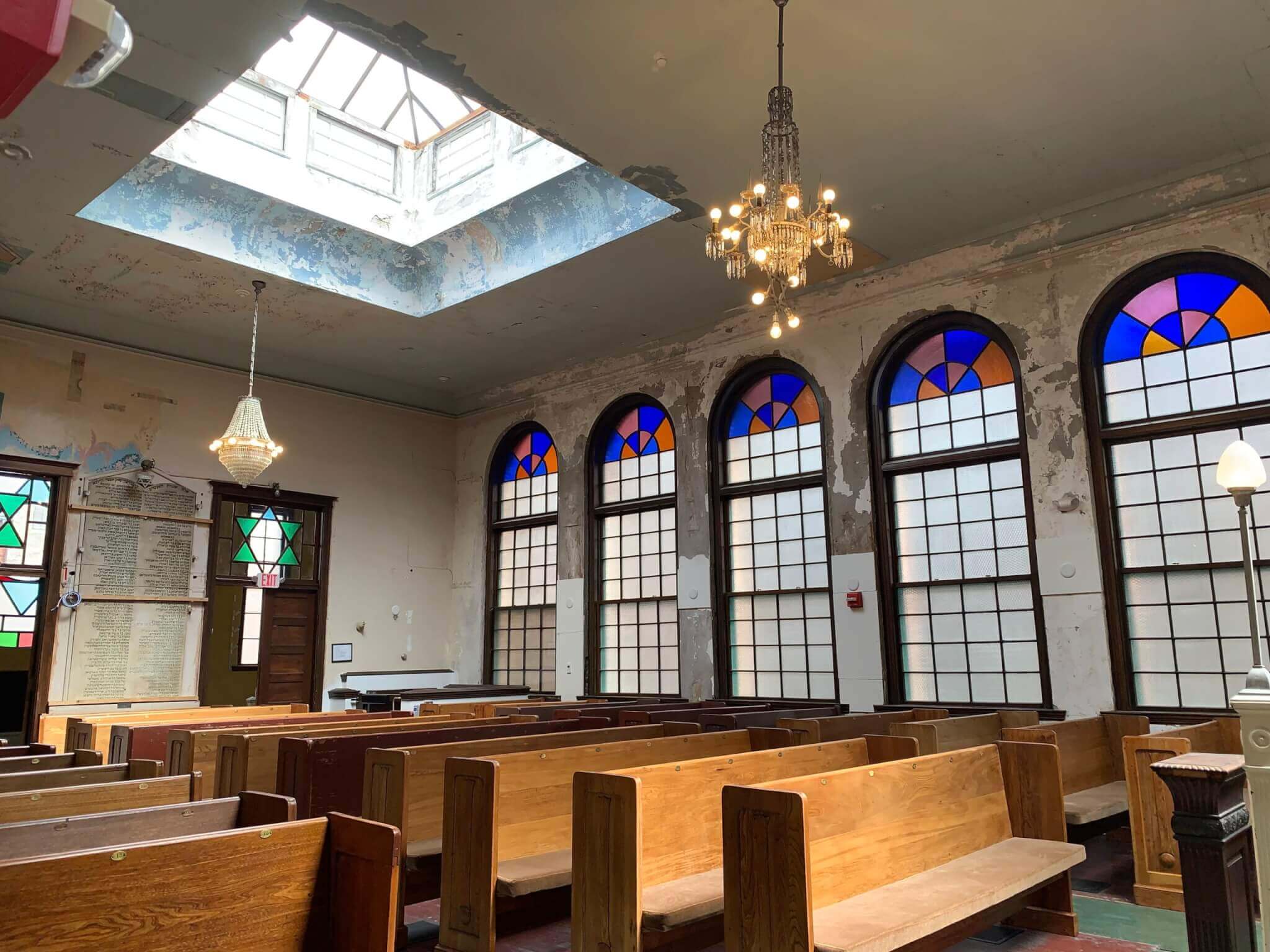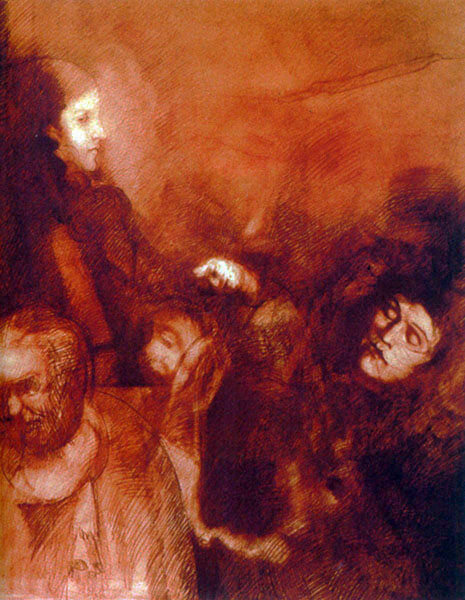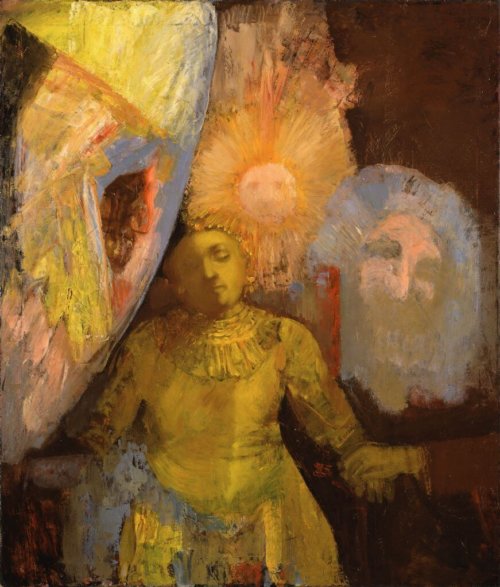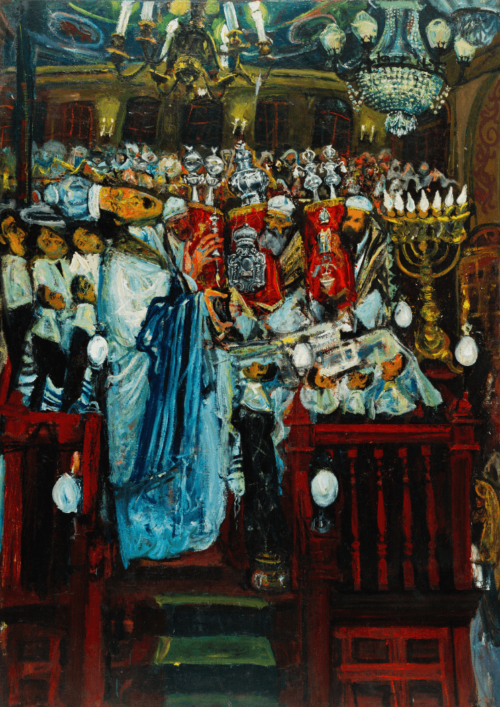Hyman Bloom: The Spiritual and the Material
Part 1 of The West End Painter examined how the West End Community Center provided Hyman Bloom a vital platform in his nascent artistic journey. Part 2 will look at Hyman Bloom’s spiritual and artistic development. Born into an Orthodox Jewish family, artist Hyman Bloom grew up in the West End attending the Vilna Shul with his father. In adulthood, he veered away from Orthodox Judaism and towards the mystic, esoteric, and occult. Bloom’s art both parallels and is the product of his spiritual journey.
Expressionist painter Hyman Bloom (1913-2009) was born into extreme poverty in a Jewish village in Latvia, immigrating to America at age seven with his family. Before moving, a teacher asked the young Hyman what he wanted to do when he arrived in Boston. He replied that he wanted to be a rabbi. Bloom and his family settled in the West End, on Auburn street, in a crowded tenement apartment. To escape the often turbulent apartment, Bloom and his father went to the synagogue. Bloom recalled that:
In Boston we went to the Vilna shul. My father’s name appears on a list of members that was found recently. He also went to the North Russell Street shul, which had more decoration. It was more Russian, of the Sephardic tradition. The Chamber Street shul had a large decorated curtain painted on the wall. It was very beautiful. My father attended all of these, but always returned to the Vilna shul.
Despite his upbringing within Orthodox Judaism, by adulthood Bloom had stopped attending regular services. He began to embark on his own quest to find spiritual truth, and started to explore and read about Hinduism, Buddhism, theosophy, astrology, and the occult. He attended meetings at the Order of the Portal to learn about occult subjects; visited Boston’s Vedanta center to study Hindu philosophy; and, in the summer of 1939, read Helena Petrovna Blavatsky’s The Secret Doctrine, the Synthesis of Science, Religion and Philosophy, which offered Bloom a framework for thinking through esotericism in a comparative manner. Importantly, Bloom was not a stringent adherent to any one of these singular traditions, preferring instead to synthesize aspects of them together. Theosophy, an occult spiritualist movement that drew inspiration from an eclectic mixture of religious and philosophical views, was particularly attractive to Bloom. He admired theosophy’s synthesizing tendencies and its goal of connecting the individual to a spiritual totality. After reading Blavatsky’s work, Bloom had his own mystical, life-changing experience one night in the fall of 1939 when he was alone in his studio, where he saw a vision of brilliant color and felt an expansion of consciousness. As he remembers: “I had a conviction of immortality, of being part of something permanent and ever changing, of metamorphosis as the nature of being… Everything was intensely beautiful and I had a sense of love for life that was greater than I had ever had before.”
Bloom’s journey from Orthodox Judaism to mysticism is evident in his art. He viewed the artist as a medium who could bridge the spiritual and material worlds; or, in his words, “the artist is the channel.” In his paintings, Bloom developed a series of recurring themes in his art – life, death, the spiritual – as well as recurring subjects – rabbis, seances, corpses – all of which were depicted in vivid jewel tones. For Bloom, art was the site where he could synthesize his Latvian, Jewish roots with his spiritual and artistic discoveries in Boston. The process of art-making itself was a mystical exercise for Bloom: “The artist’s reward is pleasure, ecstasy from contact with the unknown.” Bloom’s theosophic and ecstatic tendencies can, for example, be seen in his The Medium (pictured below). Here, Bloom uses Bodhisattva imagery to express ideas of liminality, or the linking of the human and divine. On another level, the imagery itself parallels the role of the artist as the medium between the two worlds.
Bloom’s encounters with Orthodox Judaism and mysticism are visually manifested in his The Synagogue. Completed in 1940, one year after his mystical experience, the painting shows the inside of a synagogue, with the congregation and the cantor bathed in light from candles and chandeliers, and their heads upturned in song. The scene recalls both Bloom’s visits to Orthodox shuls with his father and his more recent mystical experiences of dazzling light and spiritual ecstasy. Music, in many ways, became a critical nexus between his old and current life. Bloom, his circle of friends, and theosophic writers saw music as a mechanism for mystical connection, and in synagogues Bloom could find these ecstatic moments of religious performance. As the painter described: “I frequented the Woodrow Street shul later as an adult. They had the best cantors in America. I was drawn to the Jewish music and ceremony. So much feeling was put into the music, the ceremony, because it was an acceptable means of expression in contrast to visual art that was limited.”
The Synagogue vividly weaves together different threads from Bloom’s life, from his upbringing in a Jewish village in Latvia; to his childhood in the West End, where he visited synagogues, like the Vilna Shul, with his father; to his later spiritual and artistic odysseys. The painting is a medium between the spiritual and material, as well as a window into Bloom’s life.
Article by Grace Clipson, edited by Bob Potenza.
Sources: Judith Arlene Bookbinder, Boston Modern: Figurative Expressionism as Alternative Modernism (Lebanon, NH: UPNE, 2005); Bernard Chaet, “The Boston Expressionist School: A Painter’s Recollections of the Forties,” Archives of American Art Journal 20, no. 1 (1980); Cynthia Fowler, “A Progressive View on Religion and Modern Art: The 1944 Religious Art of Today Exhibition at Boston’s Institute of Modern Art,” Religion and the Arts 19 (2015): 488–530; Hyman Bloom: Spirituality and Art; Hyman Bloom: The Beauty of All Things; Hyman Bloom: The Beauty of All Things.











